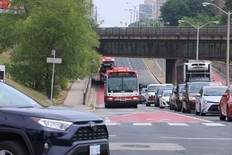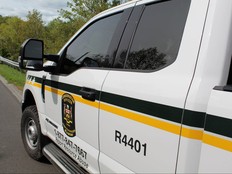VEZINA: The differences between emergencies, disasters and catastrophes
Here's how to properly categorize extraordinarily bad events

Article content
When bad things happen, the media often use such terms as “emergencies,” “disasters” and “catastrophes” interchangeably to describe them.
This is both incorrect and imprecise.
Here’s how to properly categorize extraordinarily bad events into each of these three categories.
All three describe a state of non-normal operations. Each represents an extra degree or “stage” beyond a situation that is “normal.” The terms are also contextually dependent on the group experiencing what is happening.
Here are some general thresholds for each event.
Emergency: An event or impact that requires an extraordinary plan to be activated — something that is not normal that must be immediately addressed.
What is significant in an emergency is that while there is a need to activate a plan, everything is working in response to the plan.
Emergencies are by definition manageable and do not require significant ad-hoc decision making.
For example, 911 is called, emergency services respond, a plan is followed and the emergency is resolved.
Disaster: An event that overwhelms existing emergency plans and requires a new decision-making structure in order to respond.
The critical part of this is that when the emergency plan fails, the entire system is at risk of failing.
However, disaster situations are still manageable.
While a disaster may invoke chaos, people can still be organized, communications can be reestablished and quick decisions can be made.
Responding to a disaster involves developing a new plan and enacting it on-the-fly, because existing plans can’t respond quickly enough to what is happening.
For example, 911 is contacted because of a train derailment.
Emergency services respond and, for whatever reason, this particular train derailment creates a uniquely hazardous situation to which existing emergency plans do not apply.
However, as long as a new plan can be developed on-the-fly to manage the situation, this qualifies as a disaster, as opposed to a catastrophe.
Catastrophe: An extraordinary event that is unmanageable.
All communication breaks down, the situation is chaotic and all attempts to restore order prove futile.
The only practical action that can be taken in a catastrophe is to accept the loss or wait until the situation becomes more manageable.
Imagine being in the middle of a Category 5 hurricane that has knocked out all communications and you are trying to coordinate a response by ambulance services that are underwater, three blocks away from where they are needed, using a megaphone from a storm shelter, inside of a building.
All one can do in such a situation is to wait until the hurricane passes and conditions change to something that can be managed.
Now let’s examine how these three different terms are contextually dependent.
Imagine a commercial business catching on fire which results in three fatalities and destroys all of its assets, including paper records vital to the continuation of the business.
What has happened is a catastrophe for those who are killed. There is no way to manage the situation and no emergency response is possible.
RECOMMENDED VIDEO
The owner of the business, off-site when the fire occurred would, depending on the amount of damage, consider it a disaster — where the response may be difficult but can still be managed — or a catastrophe, where no response is possible to save the business.
On the other hand, from the perspective of the business owner, this event could be a manageable emergency.
That would be the case if the business owner has digital backups for all paper records destroyed in the fire and an advanced continuity of operations plan, including things like using an alternate site to continue operations while maintaining critical staff.
For a neighbouring business that was threatened by the fire but ultimately not damaged, the situation was an emergency. A pre-existing plan was activated, emergency services were called and responded and the business was saved.
From the perspective of the fire department, what has happened is not an emergency, disaster or catastrophe, but business as usual.
Responding to fires is a regular, normal and expected event for the fire department.
Whether something is an emergency, disaster, catastrophe or business as usual depends on whether it can be managed, how it can be managed and the perspective from which it is being viewed.
— Alex Vezina is the CEO of Prepared Canada Corp, teaches Disaster and Emergency Management at York University and is the author of Continuity 101. He can be reached at info@prepared.ca.











Postmedia is committed to maintaining a lively but civil forum for discussion. Please keep comments relevant and respectful. Comments may take up to an hour to appear on the site. You will receive an email if there is a reply to your comment, an update to a thread you follow or if a user you follow comments. Visit our Community Guidelines for more information.